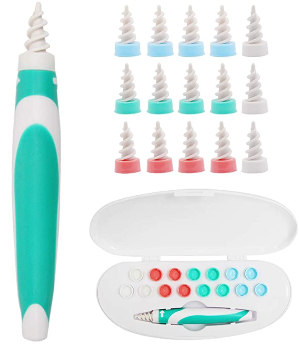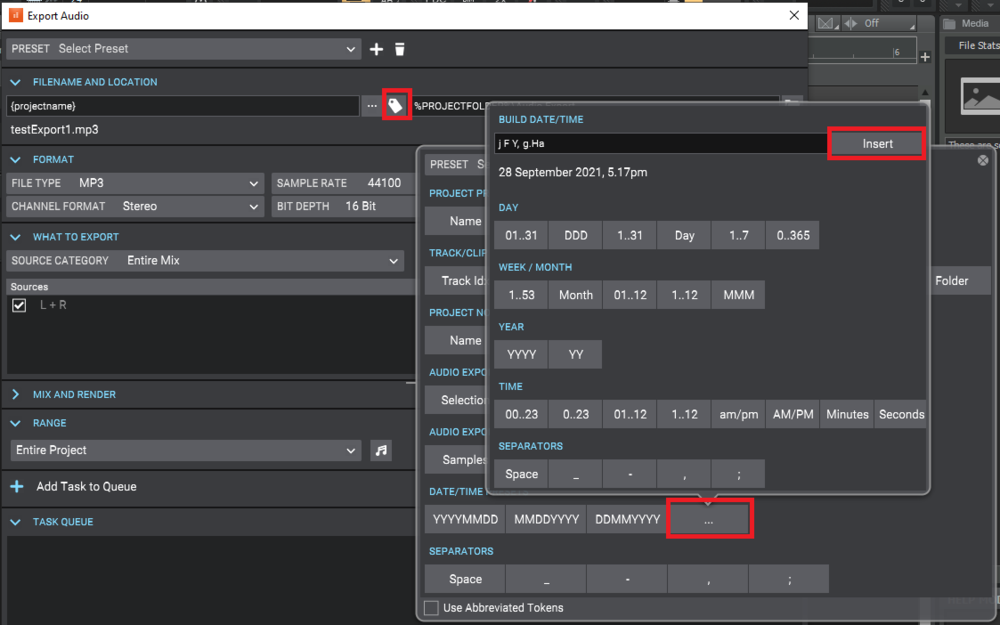-
Posts
6,118 -
Joined
-
Last visited
-
Days Won
26
Everything posted by msmcleod
-
Have you tried excluding your projects & global audio folder from your virus checker and any cloud sync apps?
-
I've just tried saving a track template with an audio track sending to an aux track, and it worked fine for me - although I did make sure the aux track was in the selection when saving the track template.
-
Build 27.09.0.145 is the latest version. There's no difference between the one you have and the one released on 04.10, we just "promoted" that version from early access to the one on the official update channel.
-
@Josh Barron - we've been getting a lot of these kind of reports lately, and it seems to be down to something installing an older or broken version of the Microsoft VC++ redistributables. For me, it was Melda v15 that caused the issues, but there could be some other cause. This may not be the cause your issue, but there's no harm in ensuring you're running the latest VC++ redists. The latest redists can be found here: https://docs.microsoft.com/en-us/cpp/windows/latest-supported-vc-redist?view=msvc-160 You'll want to install the x64 version of the redists for "Visual Studio 2012", "Visual Studio 2013" and "Visual Studio 2015, 2017, 2019, and 2022"
-

How do get the last version of Cakewalk for Windows 7?
msmcleod replied to David Owen's topic in Cakewalk by BandLab
@Jim Kelley - I've got the latest version of Cakewalk ( 2021.09.145 ) running on my Windows 7 64 boot, with no issues. If you're having issues, I'd check the following: 1. Make sure Windows 7 is fully up to date with Windows updates 2. Ensure you've got the latest VC++ redists installed. The latest ones can be found here: https://docs.microsoft.com/en-us/cpp/windows/latest-supported-vc-redist?view=msvc-160 You'll want to install the x64 version of the redists for "Visual Studio 2012", "Visual Studio 2013" and "Visual Studio 2015, 2017, 2019, and 2022" 3. Ensure you've got TLS1.2 enabled as default for Cakewalk authorisation to work: https://support.microsoft.com/en-us/topic/update-to-enable-tls-1-1-and-tls-1-2-as-default-secure-protocols-in-winhttp-in-windows-c4bd73d2-31d7-761e-0178-11268bb10392 . Assuming you're up to date with Windows Updates, you can jump directly to the "Easy Fix" section on this page: https://support.microsoft.com/en-us/topic/update-to-enable-tls-1-1-and-tls-1-2-as-default-secure-protocols-in-winhttp-in-windows-c4bd73d2-31d7-761e-0178-11268bb10392#bkmk_easy -
The Export Dialog is selection based, so: If you've nothing selected in your project, all sources will be available If you've got tracks and/or clips selected, sources will be limited based on the selected tracks/clips. The Tracks/Buses in project basically allows you to alter your project selection and the mute/solo status of tracks & buses, without having to exit the dialog. In most cases, you'd make your selection in the tracks view before you open the dialog, but if you're creating multiple export tasks it's convenient to use the "Tracks/Buses in Project" flyout to alter the selection to create additional tasks. It's also there to be able to alter your selection if you'd made a mistake in your original selection.
- 4 replies
-
- export
- possible bug
-
(and 1 more)
Tagged with:
-

Trouble editing an Articulation in Piano Roll
msmcleod replied to congalocke's topic in Cakewalk by BandLab
It's all to do with the active track. You can only edit articulations on the active track. If you're showing more than one track in the PRV, articulations from anything other than the active track will be greyed out. e.g.: -
@Milton Sica - It's not clear what context you're referring to here. Is it incorrect when you first create an MP3 export, or are you referring to recalling a task? Every time you open the Export Dialog, it grabs the latest information from the notes browser. If you create a new mp3 export task, the mp3 dialog will show and allow you to customise this information. Anything you edit will be stored inside the task. Subsequent changes to the notes browser will NOT update the task. Additionally, any edits you made to the mp3 dialog will remain while you are still in the Export Dialog. Once you close and re-open the Export Dialog , it grabs the latest information from the notes browser.
-
Ok, a couple of things: 1. Presets contain your default filename, format, source category type & render options. They are meant to be global and do not save the chosen source category items themselves (which are project specific) or anything to do with project track or time selection. 2. Tasks are project specific. These contain everything that is in the dialog at the time you created the task. If you want to recall a task, you need to double click the task to recall its settings once you've opened the export dialog.
-
Yes, this is correct. Presets are global so it makes no sense to store project specific information in there. Tasks however, are project specific... so if you're using a template you could save them as a task in your template project.
-

What is best way to correct soft vocals in an audio track?
msmcleod replied to DallasSteve's question in Q&A
I used to use the gain envelope method, but nowadays I just use an auto leveller plugin as I can get good results very quickly. One's to look at: Hornet AutoGain Pro: https://www.hornetplugins.com/plugins/hornet-autogain-pro/ Melda AutoVolume: https://www.meldaproduction.com/MAutoVolume Waves Vocal Rider: https://www.waves.com/plugins/vocal-rider The advantage of using the gain method or these plugins over compression, is it doesn't sound compressed. It just levels things out. That being said, I also generally use gentle compression on a vocal after doing any levelling. -

Cakewalk needs a Channel Rack and Sampler option
msmcleod replied to carlo renato's topic in Feedback Loop
You can get almost exactly the same results using something like Sitala on an instrument track and opening the Step Sequencer. -
I take it they have no interest in customers in any of the 27 EU countries then, cos GDPR rules state they must give a valid reason for wanting every bit of personal information, and specify exactly why they need it and what they use it for. Not being based in the EU isn't an excuse. If they want to do business with EU customers they have to follow the EU rules. FWIW the same applies for non-US site selling to the US - they have to follow certain US rules if they want to sell to US customers ( can't think of them all right now, but certainly at one point an import/export declaration was needed for selling anything using encryption, which normally requires a munitions licence in the US).
-
@Leroy Casterline - FWIW, In the past I've had nothing but problems with USB to MIDI cables and SYSEX. The issue is that a lot of these cables have a IC in them with an extremely small buffer size. They receive data from Cakewalk at full USB speed (480 Mbps), but are unable to send the data out at MIDI speed (32.125 Kbps) fast enough before their small internal buffer overflows. There're two ways to remedy this: 1. Find a way of slowing the data down. IIRC MIDIOX can do this, but in Cakewalk, you need to split the data up into much smaller chunks with delays in between. This normally means not using SYSEX banks, but instead recording the MIDI directly from the device into a normal MIDI track so it can be sent back out at the speed it was received. This may not always work if the device insists on sending the data out as one big chunk of SYSEX. 2. Use a better MIDI interface (e.g. M-Audio MIDISport series, MidiTech MIDIFace series, or if you've a MIDI interface on an external audio interface that will usually work too)
-
The default settings for TAB and SHIFT+TAB is to navigate through transient markers on the selected clip. I'm assuming you've rebound these to Next Marker and Previous Marker respectively? In which case, you need to check your Landmark settings (right click on "Marks" on the snap module) and make sure arranger start and/or arranger end is checked.
-
WARNING... for anyone installing this on Windows 7 (either 64 bit or 32 bit). I found after installing this, CbB became unstable on Win 7 64 bit, and SPLAT unstable on 32 bit. Cakewalk Command Center refused to run at all on 32 bit. The solution is to re-install the Visual C++ redistributables. The VC++ 2015-2019 package and the VC++ 2013 package can be downloaded from here: https://support.microsoft.com/en-us/topic/the-latest-supported-visual-c-downloads-2647da03-1eea-4433-9aff-95f26a218cc0 VC++ Redist 2012 Update 4 can be downloaded here: https://www.microsoft.com/en-gb/download/details.aspx?id=30679 Once I'd installed these, everything was working again.
-
This one isn't even battery powered. You just twist it in your ear, pull it out and clean it. I use it 2 - 3 times day, especially after using headphones for a while. The silence and clarity in my hearing afterwards is surprising.
-
Oh, this does look nice...
-

File-Export-Audio not working after 9/2021 update.
msmcleod replied to Matthew Marsolek's question in Q&A
@Matthew Marsolek - It sounds like it's trying to position the dialog offscreen. The last used size & position of the dialog is stored in the registry under this key: Computer\HKEY_CURRENT_USER\SOFTWARE\Cakewalk Music Software\Cakewalk\Core\Dialogs\File Export Dialog If you delete the File Export Dialog key from Computer\HKEY_CURRENT_USER\SOFTWARE\Cakewalk Music Software\Cakewalk\Core\Dialogs\ , this will cause the dialog to go back to its defaults. -
Yeah, I've got it on my laptop... didn't really want it on my desktop though. I'll give it a try. I guess I can live with it on my dev partition.
-
This is a great deal... pity it requires Steam to be installed though...
-
For a few years I had terrible tinnitus, to the extent where I went a whole year getting no more than 3 hours sleep a night. I gave one of these a try, and it's totally cured it for me: https://www.amazon.co.uk/dp/B09G5VYBKL
-
You may not have noticed, but there's also a custom date builder in the filename tags popup, so you can have any date format you want:
-
You could draw a section using the arranger, then press play on that section in the arranger inspector:
-
+1 to this. Look at Andrew Scheps - he does some mixes in a hotel room, with his headphones plugged into his macbook using it's onboard device. If you're just mixing, and not recording anything, there's absolutely no reason why you can't use an onboard Realtek device. If you just use VSTi's to make music then there's no reason why you can't use an onboard Realtek device. In theory, there's shouldn't be anything stopping you recording audio with a Realtek device either... it's just that most motherboard manufacturers have done absolutely nothing to shield the audio signal path from the input to the Realtek chip, meaning you get loads of interference. This is not Realtek's fault - it's the fault of the motherboard manufacturer.







